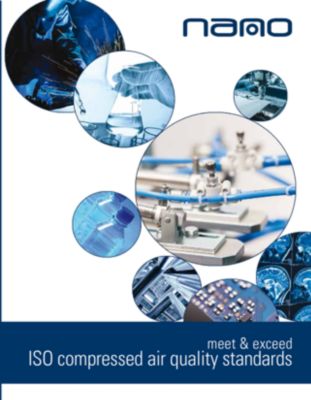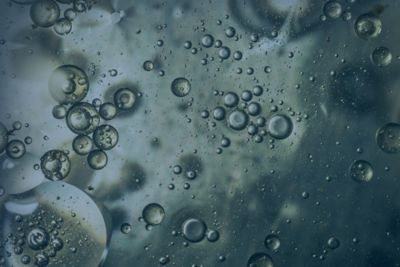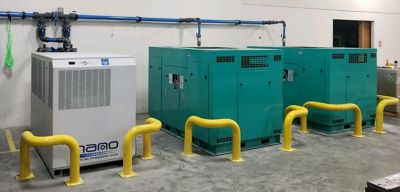Protected within a genuine IP54 cubicle to simplify cabling and enhance safety, and it monitors all key parameters to ensure optimal installation reliability.

Key Specs:
Flow Rate
216 to 5760 Nm3/h
Connection
25 to 150 50 HZ: DN/PN16
Air Quality
ISO 8573.1:2010 Class 1.2.2 or 1.1.2
Product Documentation
- Brochures
Features
Our energy-saving Dew Point Dependent Switching provides the ultimate in energy and power savings and reduces dryer wear and tear.
Offers easy handling with a standard frame featuring forklift slots and lifting eyes, improved efficiency through wide vessels that ensure low air speed and longer contact time, and a reduced overall height thanks to integrated flanges in the top and bottom vessel shells.
Specifications of Our Models
Heatless Desiccant Dryer Models |
Inlet & Outlet (50 HZ: G/PN16) |
Rated Flow FAD at 7 bar(e) |
|---|---|---|
HL 330 |
80 |
1188 |
| HL 400 | 80 | 1440 |
HL 550 |
80 |
1980 |
HL 850 |
100 |
3060 |
HL 1100 |
100 |
3960 |
HL 1400 |
125 |
5040 |
(1) This information is for general information purposes only. For additional technical specifications, refer to the product brochure, technical data sheets, and/or user guides. Technical specifications are subject to change.
Frequently Asked Questions
A desiccant dryer is a type of compressed air dryer that removes moisture from compressed air using a desiccant material—typically silica gel, activated alumina, or molecular sieves. These materials attract and hold water vapour from the air, ensuring the output is extremely dry. You need a desiccant dryer when moisture in compressed air could cause problems or damage, such as: precision manufacturing, pneumatic tools and valves, food processing, pharmaceutical, paint spraying, cold environments. In cold climates, a desiccant dryer is required to prevent moisture in compressed air lines from freezing. They are essential when ultra-dry air is required, typically reaching dew points as low as -40°C to -70°C.
Dew point is the temperature at which air becomes saturated with moisture, meaning it can no longer hold all the water vapour it contains. When air is cooled to its dew point, water vapour starts to condense into liquid water. On a humid day, the dew point might be 18°C. If the temperature drops to that level overnight, dew forms on surfaces.
In compressed air systems, if the dew point is higher than pipe or ambient temperatures, condensation will form inside the system, leading to corrosion or contamination.
Pressure Dew Point (PDP) is the temperature at which water vapor begins to condense into liquid at a given system pressure (not atmospheric pressure). It's a key measure of how dry compressed air is.
In compressed air systems, moisture is your enemy — it causes:
- Corrosion in pipes and tools
- Malfunction of pneumatic equipment
- Product contamination (especially in food, pharma, electronics)
Yes. Climate and environmental conditions directly affect the amount of moisture in the air and the risk of condensation in your compressed air system. This, in turn, affects the dew point you need to maintain to avoid moisture-related issues.
- Hot & Humid Climates
- Higher ambient humidity means more water vapor in the air.
- You’ll need a lower dew point to remove moisture and avoid effectively:
- Water buildup in lines
- Corrosion
- Product contamination
- Typical PDP required: -40°F (or lower for sensitive applications)
- Cold Climates
- Moisture can condense and freeze in outdoor lines or exposed piping.
- Even if the air contains less moisture, freezing becomes a concern.
- A dew point lower than the coldest ambient temperature is essential.
Rule of thumb: Set PDP at least 20°F below the lowest ambient temperature the system will encounter.
The HL range utilizes a two-tower system, where one tower dries the compressed air, and the other undergoes regeneration using a portion of the dried air. This heatless regeneration process ensures continuous operation without the need for external heat sources. The system employs strategically positioned valves to switch between drying and regeneration cycles.
The HL dryers provide a standard pressure dew point (PDP) of -40°F, which corresponds to approximately 0.1% relative humidity at room temperature—suitable for most industrial applications. For more demanding environments, an optional -94°F PDP is available, delivering ultra-dry air that is virtually free of moisture. This lower dew point is crucial for critical applications where even minute traces of moisture can lead to problems such as corrosion, bacterial growth, or product contamination. Typical industries requiring a -94°F PDP include pharmaceutical manufacturing, semiconductor manufacturing, aerospace, and cleanroom laboratories. However, unless your application demands explicitly ultra-low humidity, a -40°F dew point is a more cost-effective and energy-efficient choice.
Moisture is adsorbed by the desiccant (activated alumina) as compressed air flows through the drying tower. The regeneration tower then uses a small amount of the dry air to remove moisture from the saturated desiccant.
1. Determine required air flow (measured in standard cubic feet per minute, scfm)
2. Know your inlet conditions, as your dryer performance depends on the actual conditions of the air entering the dryer.
- Inlet Temperature (°F)
- Inlet Pressure (psig)
- Ambient Temperature (°F) – where the dryer is located
3. Select the required pressure dew point (PDP).
- -40°F: general industrial use (standard)
- -94°F: critical applications (pharma, electronics)
Yes, but only a minimal power supply is needed—for the controller and solenoid valves.









